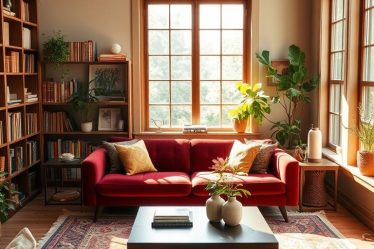
Can transforming your home into an eco-friendly haven really make a difference?
As we become more aware of our environmental footprint, sustainable design is key in home improvement. It’s about making spaces that are not just beautiful but also good for the planet. By using eco-friendly materials and practices in your DIY projects, you can cut down on waste and save energy.
This trend in interior design is growing as people want greener homes. By following sustainable design principles, you can make your home healthier and more eco-friendly.
Key Takeaways
- Understand the principles of sustainable design
- Learn how to incorporate eco-friendly materials into your home
- Discover simple DIY tips for a more sustainable home
- Explore the benefits of sustainable design for your home and the environment
- Start your journey to a more environmentally friendly interior
The Foundations of Sustainable Interior Design
How we design our homes affects the planet. Sustainable interior design is key. It’s important to know the basics of eco-friendly design.
Environmental Impact of Traditional Interiors
Traditional design often harms the environment. It uses non-renewable materials and harmful finishes. Switching to sustainable practices is vital for our future.

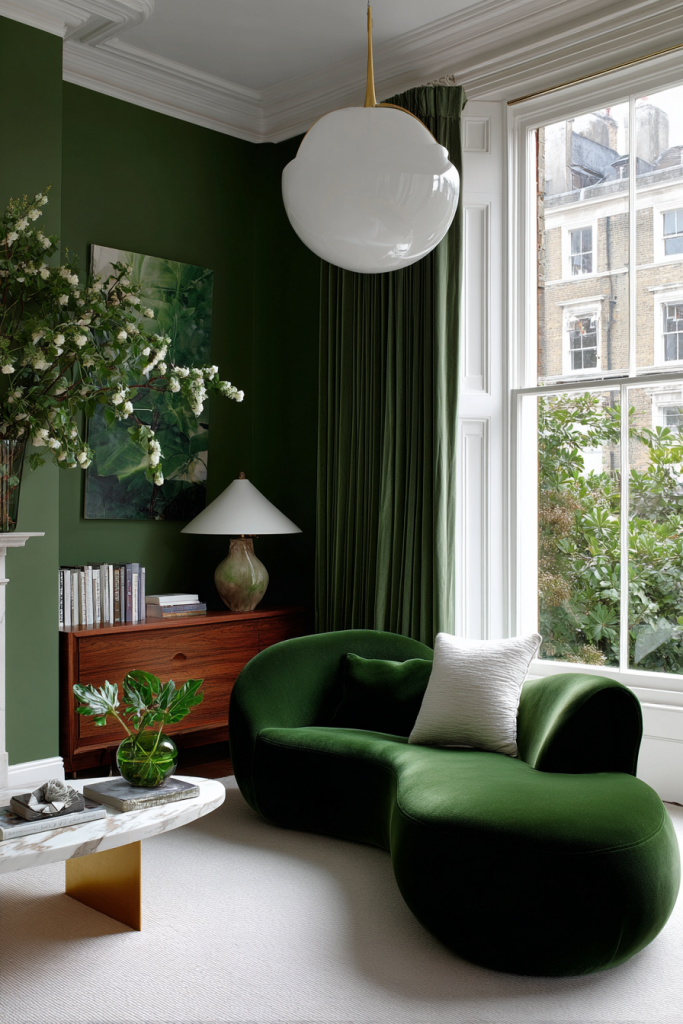
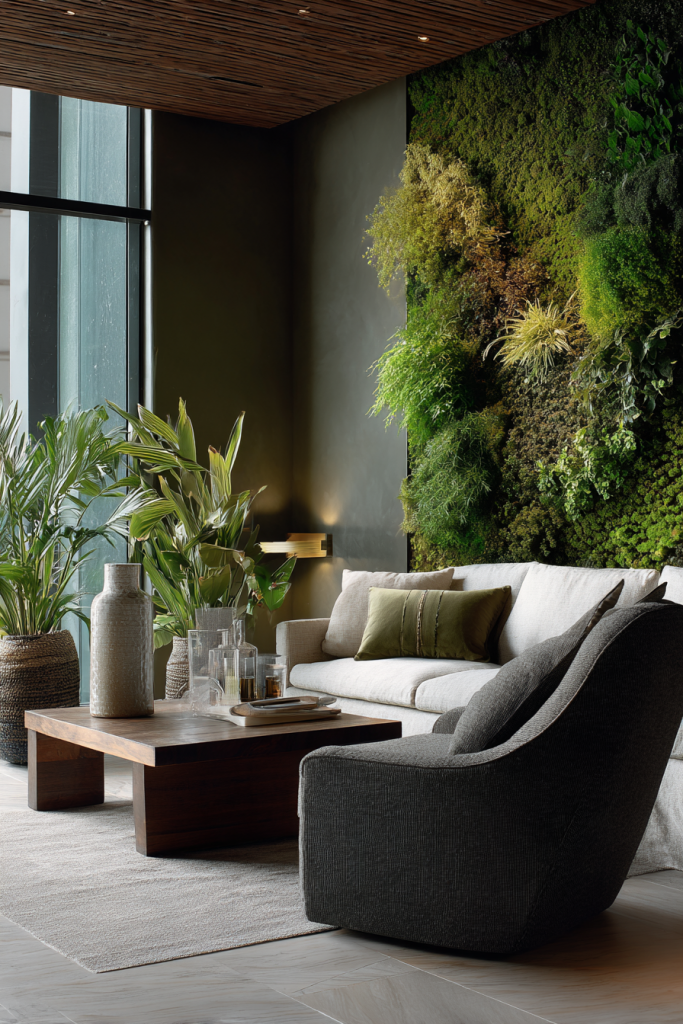
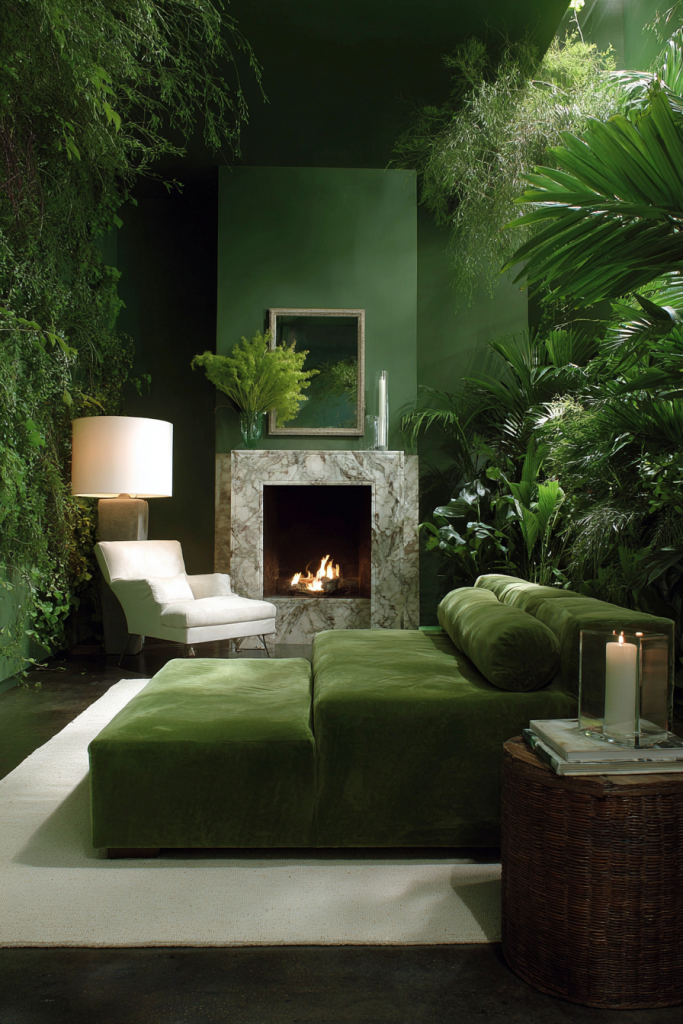
Core Principles of Eco-Friendly Design
Eco-friendly design focuses on renewable resources and less waste. It also chooses non-toxic, sustainable materials. Homeowners can lessen their environmental impact by following these principles. There are many tutorials and ideas to help you start.
Measuring Your Home’s Ecological Footprint
Knowing your home’s ecological footprint is essential. It means looking at energy use, water, and material impact.
“The smallest act can make a difference.”
Small changes, like using eco-friendly materials, can greatly reduce your footprint.
Benefits of Creating a Sustainable Home
A sustainable home is good for the planet, your health, and your wallet. By adding sustainable living elements to your home, you can lessen your impact on the environment.
Environmental Advantages
A sustainable home helps the environment. Upcycling and reducing waste are key. Even small weekend projects can help a lot.
Health Benefits for Residents
Sustainable homes use non-toxic materials and improve air quality. This is great for people with allergies or breathing problems.
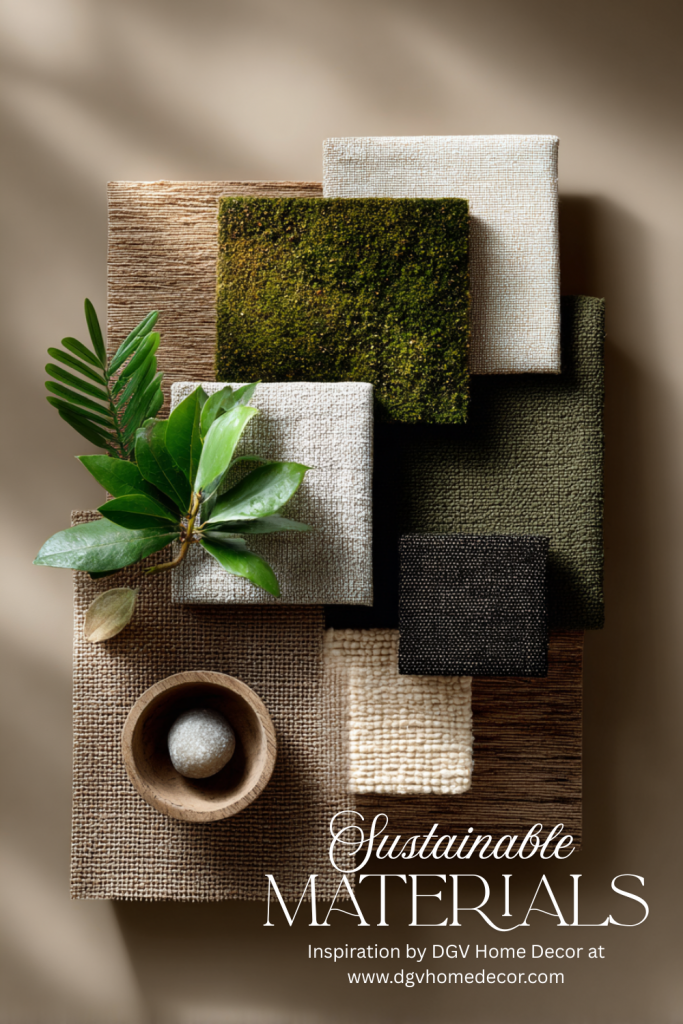

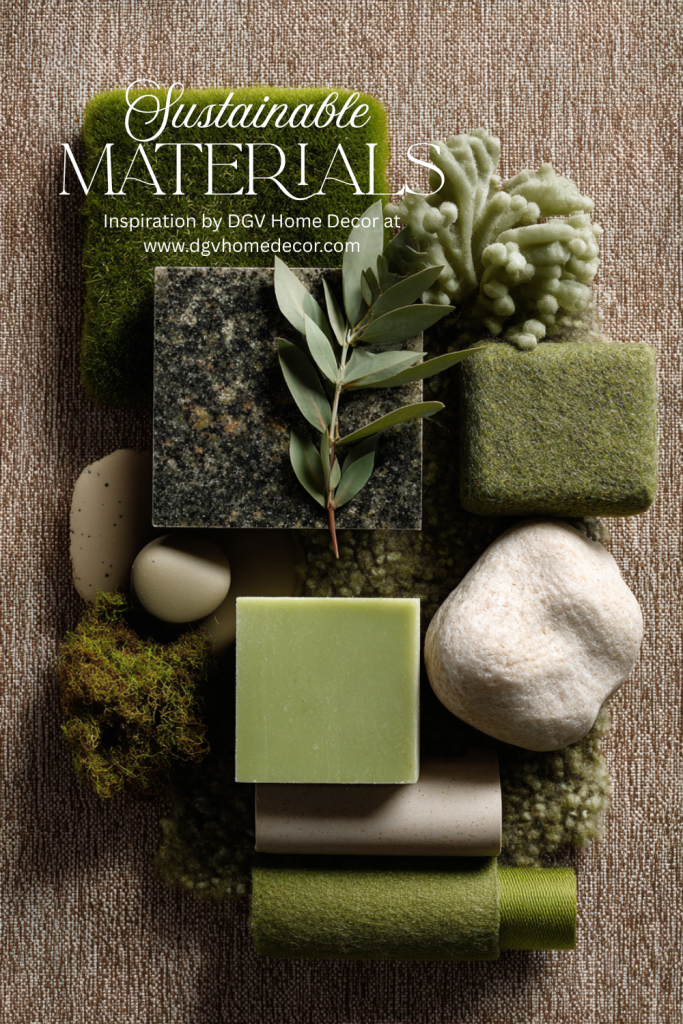
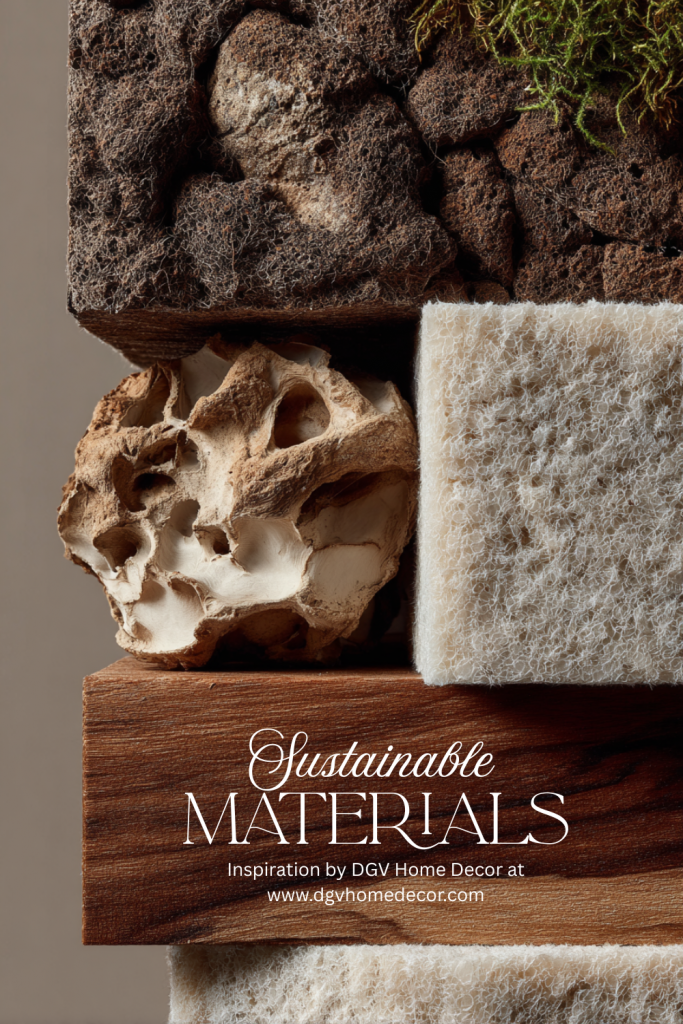
Long-term Cost Savings
Choosing sustainable home improvements can save money over time. Energy-efficient appliances and lights cut down on utility bills, saving you money.
| Benefits | Description | Impact |
|---|---|---|
| Environmental Advantages | Reduced carbon footprint through sustainable practices | Healthier planet |
| Health Benefits | Improved air quality and non-toxic materials | Better health for residents |
| Long-term Cost Savings | Energy-efficient solutions | Lower utility bills |
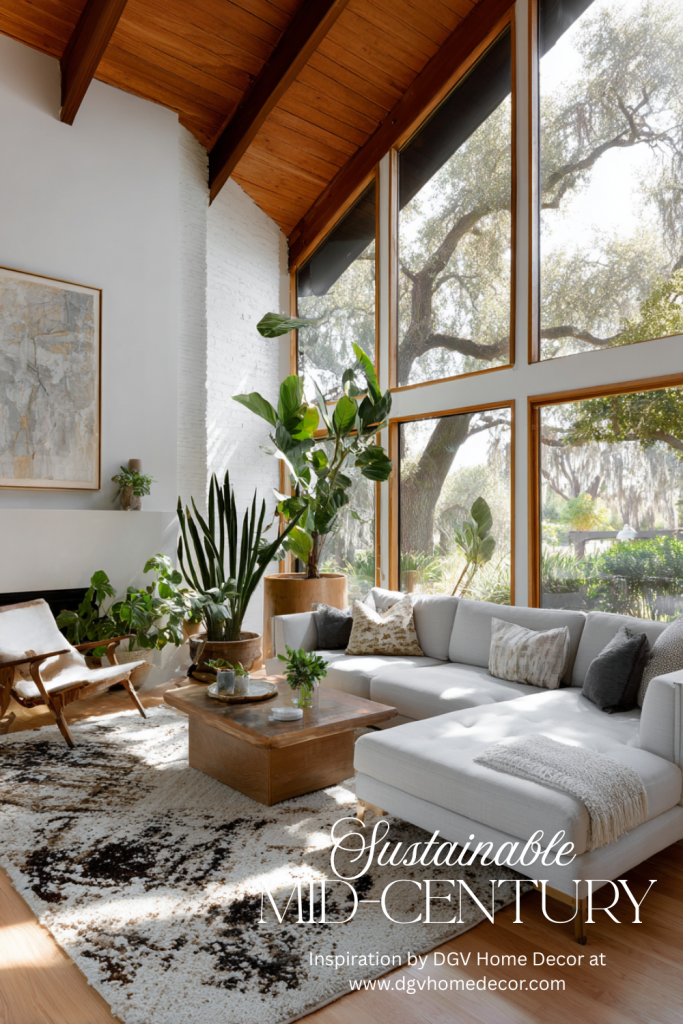
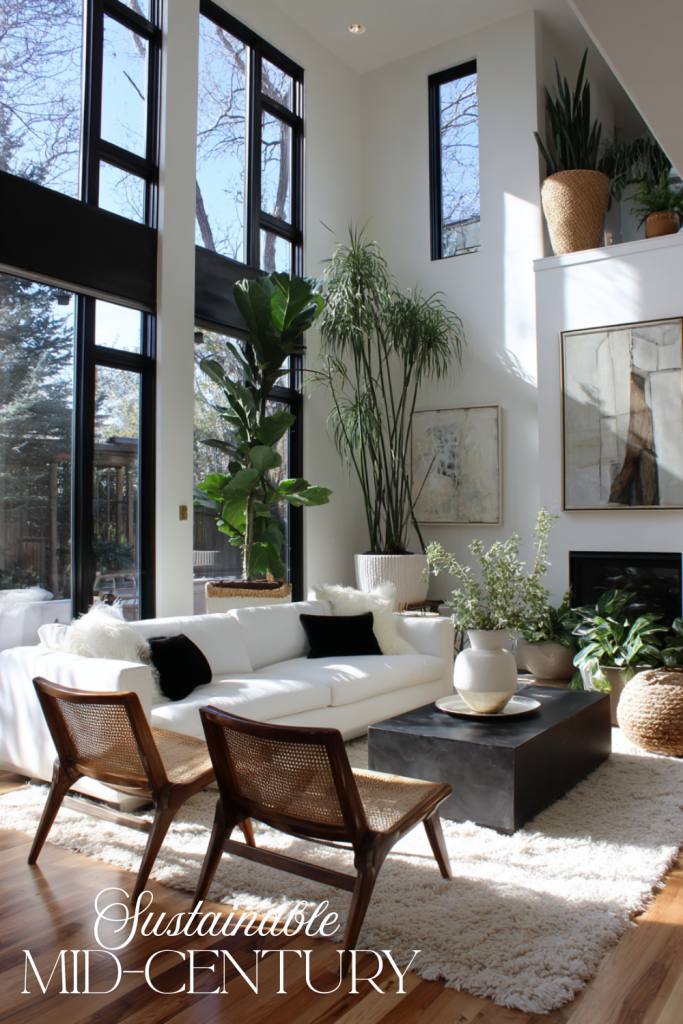
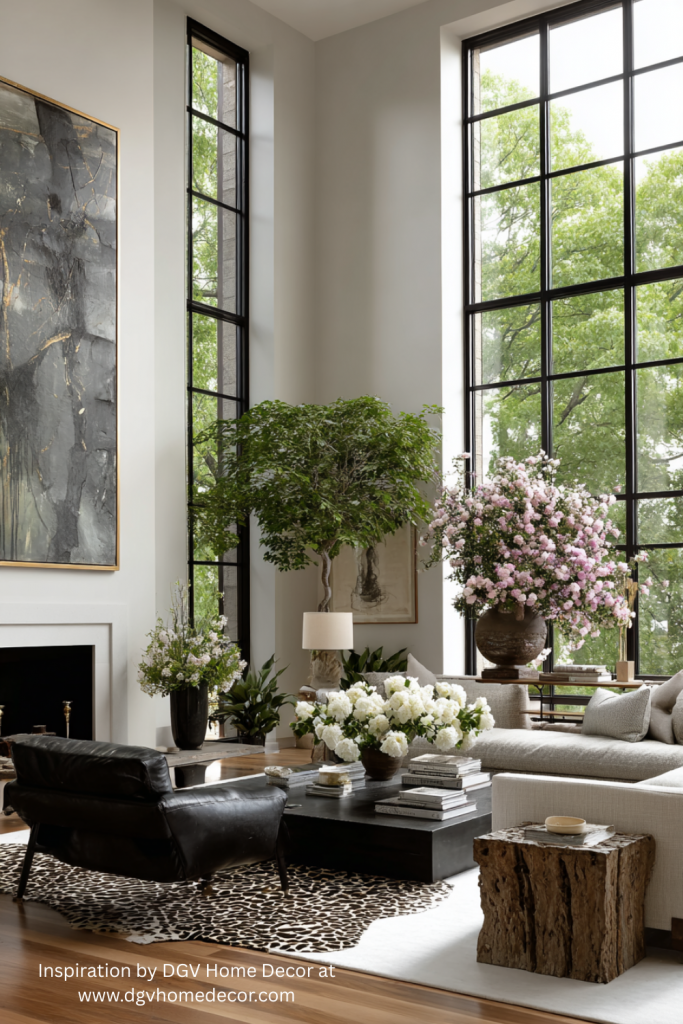
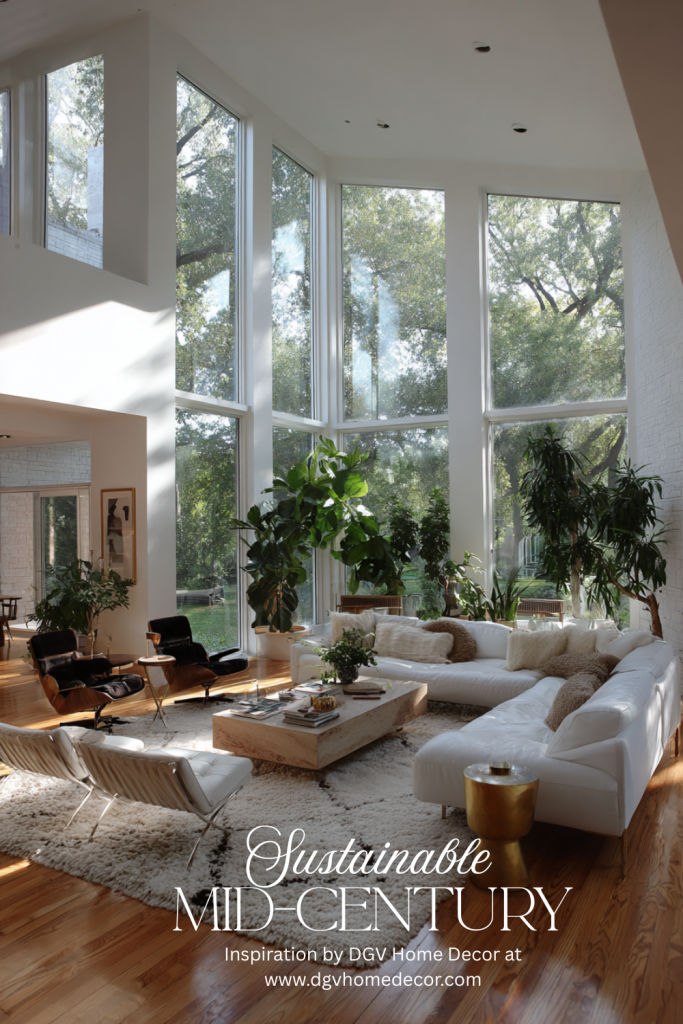
Essential Materials for Eco-Friendly Interiors
Choosing the right materials is key for an eco-friendly interior. They impact your space’s look and the environment. Plus, they affect your health.
Renewable Resources
Renewable resources are vital for sustainable design. They can be replenished naturally. Bamboo and reclaimed wood are great examples.
They bring warmth and character to your space. Plus, they’re better for the environment than traditional materials.
Non-Toxic and Low-VOC Options
It’s important to pick materials that are non-toxic and low in VOCs. This helps keep the air in your home clean. Look for paints and adhesives labeled as low-VOC or VOC-free.
Sustainable Certifications
When buying materials, look for certifications like FSC and Greenguard Gold. These ensure the materials are made with care for the environment and human health.
| Material | Sustainability Features | Health Benefits |
|---|---|---|
| Bamboo flooring | Renewable, biodegradable | Durable, resistant to moisture |
| Reclaimed wood | Reduces waste, preserves history | Unique character, adds warmth |
10 Weekend DIY Projects for Sustainable Living
Make your home eco-friendly with these 10 easy DIY projects. Living sustainably is simple with small changes at home.
Quick Transformations with Major Impact
Some DIY projects can greatly improve your home’s greenness. For example, using energy-saving lights is a big help. You can also give old furniture new life or make your own cleaning products.
- Upcycle old jars into planters or storage containers.
- Create a herb garden using recycled materials.
- Make your own beeswax wraps for food storage.
Seasonal Eco-Decor Ideas
Decorating your home greenly is both enjoyable and good for the planet. Use natural items like pinecones, leaves, and branches for stunning decor.
Try making a wreath from recycled stuff or a centerpiece with seasonal fruits and flowers.
Beginner-Friendly Sustainable Crafts
For DIY newbies, starting with simple crafts is a good idea. You can craft items like macrame plant hangers, woven baskets, or natural candles.
| Craft | Materials | Skill Level |
|---|---|---|
| Macrame Plant Hanger | Cotton rope, wooden dowel | Beginner |
| Woven Basket | Reed or rattan, scissors | Beginner |
| Natural Candle | Beeswax, essential oil | Beginner |
These DIY projects help make your lifestyle greener and are fun. Start making your home greener this weekend!
Upcycling Fundamentals: From Waste to Wonderful
Upcycling turns old items into something new and valuable. It helps reduce waste and encourages creativity and self-expression.
Identifying Potencial in Discarded Items
Start by looking at old items with a creative eye. Think about their original use and how they can be used again. For example, an old pallet can become a coffee table or a garden bench.
Key characteristics of items with upcycling include durability, unique design, and the ability to be refurbished or reimagined.
Essential Tools and Techniques
To begin upcycling, you’ll need basic tools and techniques. You might use sanding, painting, and reassembling. The tools needed vary by project, but common ones include hammers, screwdrivers, and glue guns.
- Sanding to smooth out surfaces
- Painting to refresh and modernize
- Reassembling to create new functional pieces
Before and After: Transformation Examples
Seeing old items transformed is truly inspiring. For example, old mason jars can become pendant lights, and worn-out furniture can be restored.
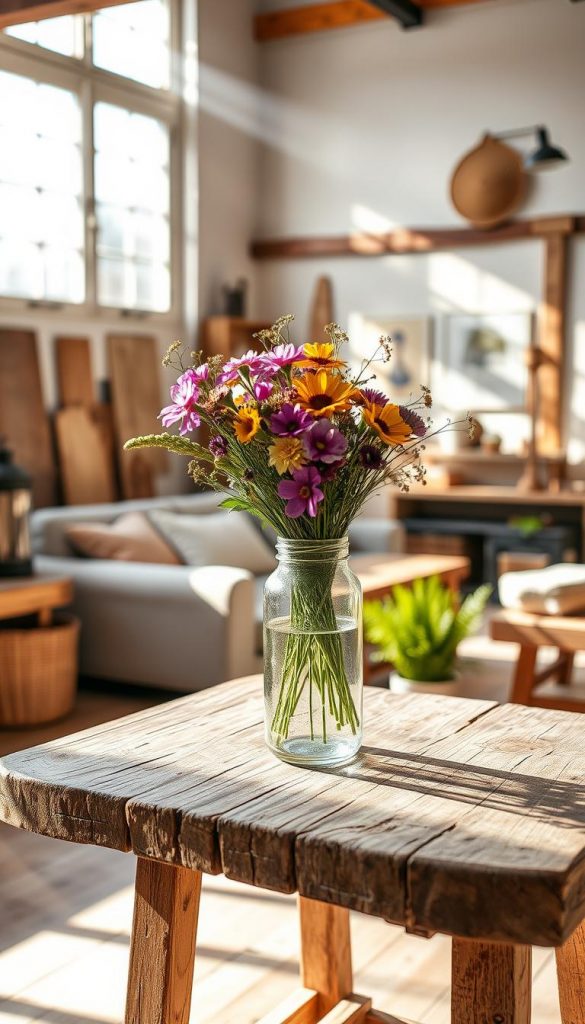
By embracing upcycling, you’re not only reducing waste. You’re also creating unique, handmade crafts that add character to your home.
Bringing Nature Indoors: Biophilic Design Elements
Adding greenery or natural light can bring the outdoors into your home. Biophilic design aims to reconnect us with nature. It boosts well-being and supports sustainability.
Strategic Plant Placement for Air Purification
Plants are more than just decorations; they clean the air. Place them wisely to improve air quality. This makes your home healthier.
Water Features and Natural Light Maximization
Small fountains add calm to your home. Natural light makes you feel closer to the outdoors. Mirrors and reflective surfaces help spread light further.
Organic Textures and Materials
Using materials like reclaimed wood and bamboo warms your home. They add character to furniture, flooring, and decor. This creates a welcoming space.
Energy-Efficient DIY Design Solutions
With a few simple DIY projects, you can make your home more energy-efficient. This creates a more sustainable living space. These solutions not only cut down on energy use but also make your home more comfortable and functional.
Handmade Window Treatments for Temperature Control
Making your own window treatments is a smart way to manage your home’s temperature. Try making thermal curtains or installing cellular shades. These can keep warmth in during winter and out in summer. This can greatly reduce the need for heating and cooling.
Lighting Projects That Reduce Energy Consumption
Switching to energy-efficient lighting is an easy way to save energy. You can make your own LED lighting fixtures or update old lamps with new bulbs. Think about adding smart lighting systems that adjust based on the time or if anyone’s home.
- Use LED bulbs, which use less energy and last longer.
- Install smart light switches that can be controlled from afar.
- Make DIY lanterns using energy-saving candles or LED lights.
Smart Home Integration on a Budget
Adding smart home tech doesn’t have to cost a lot. Start with affordable items like smart plugs or thermostats. They can make a big difference in energy use. Look for DIY guides on how to add these to your home.
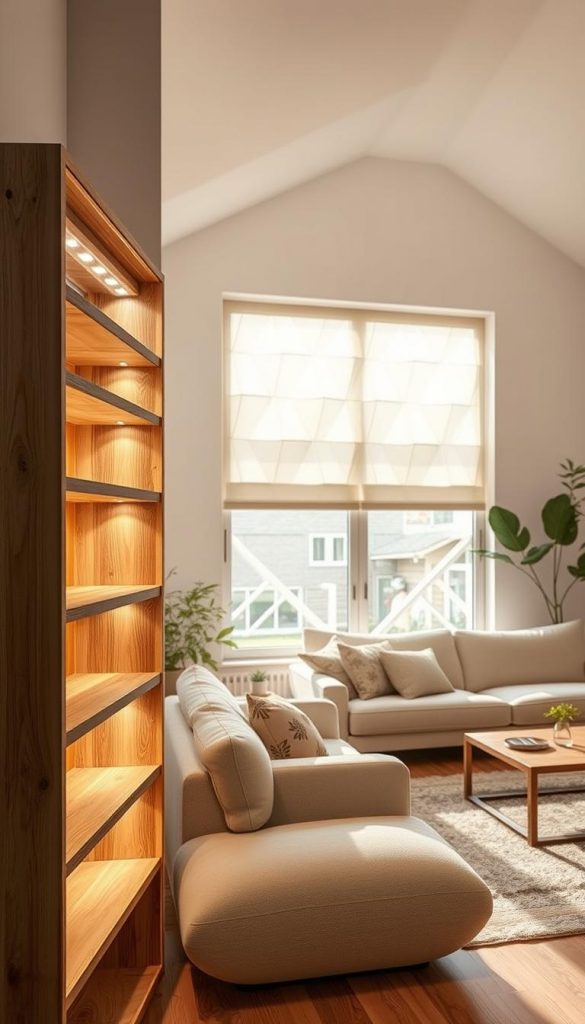
By using these energy-saving DIY projects, you can make your home more sustainable, comfy, and cost-effective. Begin with one project and see the positive change it brings.
Sustainable Furniture Projects: Build, Restore, Repurpose
Creating a greener home is easy with sustainable furniture projects. These projects help reduce waste and protect our planet. You don’t have to be an expert to join in.
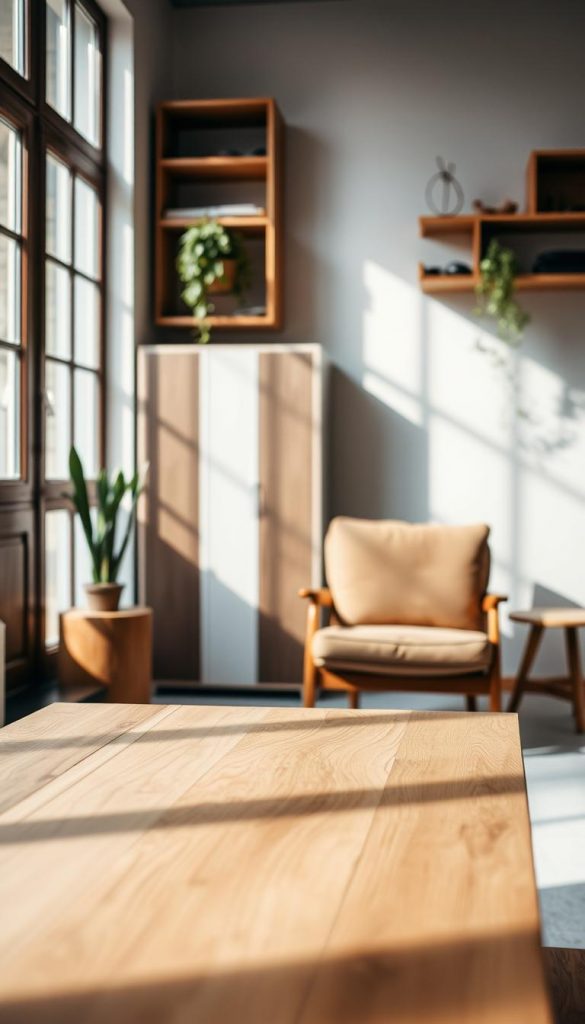
Beginner-Friendly Furniture Building Tutorials
Start with simple projects to kick off your sustainable furniture journey. Beginner-friendly furniture building tutorials show you how to make useful items like coffee tables and shelves. You’ll use wood that’s been saved from waste, and you’ll feel proud of what you’ve made.
- Find tutorials that use cheap, local materials.
- Think about using old furniture parts or materials.
- Join online groups for more ideas and advice.
Restoration Techniques for Vintage Finds
Bringing old furniture back to life is a key part of sustainable projects. Restoration techniques can make old pieces look new again. This not only saves resources but also keeps the history of the furniture alive.
Some important restoration steps include:
- Sanding and refinishing to get the original look back.
- Reupholstering to give it a fresh new look.
- Fixing or replacing hardware to make it work better.
Creative Repurposing Ideas for Existing Pieces
Turning old furniture into something new is a fun way to reuse items. For example, an old ladder can become a bookshelf, or a vintage door can be used as a coffee table top. It’s a great way to make something useful out of something that’s been thrown away.
Creative repurposing ideas can be simple or complex, depending on your skills and creativity. The main thing is to see the possibilities in items that others might ignore.
By working on sustainable furniture projects, you’re making your home look better and helping the planet. Whether you’re building, restoring, or repurposing, every effort makes a difference.
Creating Eco-Friendly Textiles and Soft Furnishings
Sustainable soft furnishings are key to reducing our environmental impact. They are not just a trend. The textiles we choose for our homes are important in our eco-friendly journey.
No-Sew Fabric Projects
No-sew fabric projects are a great way to start. They are perfect for beginners or those who like simple projects. You can make beautiful items like rag rugs or upcycled fabric wall hangings from old clothes or scraps.
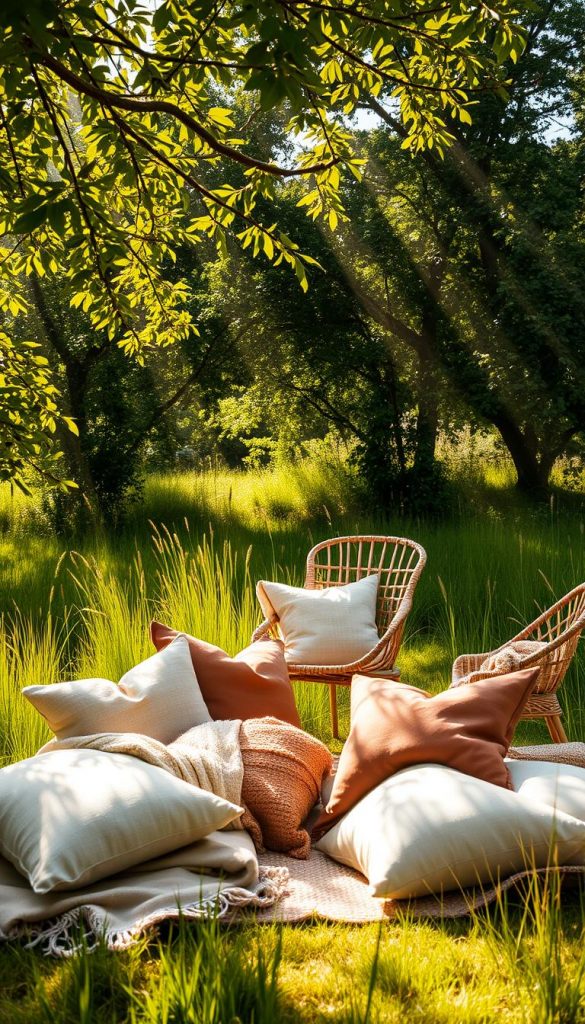
Sustainable Fiber Choices and Sources
Choosing the right fibers is essential for sustainable textiles. Look for materials that are renewable, recyclable, or biodegradable. Good options include organic cotton, hemp, and recycled polyester. Make sure to find suppliers who follow sustainable practices.
“The choice of fabric can significantly impact the environmental sustainability of a product.”
Natural Dyeing Techniques for Custom Colors
Natural dyeing is a way to color fabrics without harsh chemicals. You can use plants, spices, and other natural materials to get different colors. For example, turmeric makes a bright yellow, and indigo creates deep blues. This method is good for the environment and makes your textiles unique.
- Turmeric for yellow
- Indigo for blue
- Coffee for brown shades
By using these eco-friendly textile practices, you can live more sustainably. You also get to add a personal touch to your home decor.
Sustainable Design on a Budget
Creating an eco-friendly home doesn’t have to cost a lot. With a bit of creativity, you can choose sustainable designs that won’t break the bank.
Thrifting Strategies for Eco-Conscious Shoppers
Thrifting is a smart way to find unique, eco-friendly items for your home. Look for things that can be reused or upcycled. Think about the material, condition, and how you can use each item.
For example, an old ladder can turn into a bookshelf. Vintage fabric can be used for throw pillows or a table runner.
Prioritizing Investments
When choosing sustainable design, focus on what really matters. Identify areas in your home where you can make a big difference. Start with simple changes like replacing old light bulbs with LEDs or getting a programmable thermostat.
Free and Low-Cost Swaps
Small changes in your daily life and home can have a big impact. Try eco-friendly cleaning products, use reusable bags and containers, and find new uses for old items. This helps reduce waste.
Room-by-Room Sustainable Transformations
As we move towards a greener lifestyle, let’s tackle one room at a time.
Reducing Waste in the Kitchen
To cut down on kitchen waste, try a few easy steps.
| Old Habit | New Habit |
|---|---|
| Using disposable paper towels | Switching to reusable cloths |
Conserving Water in the Bathroom
Save water by installing low-flow showerheads and toilets.
Conclusion: Your Sustainable Design Journey
Starting a sustainable design journey is a big step towards living green. By doing DIY projects and choosing eco-friendly options, you can lessen your impact on the environment.
In this article, we’ve looked at many parts of sustainable interior design. We’ve talked about the good of eco-friendly materials and creative ways to reuse things. By using these ideas, you can make a home that’s better for you and the planet.
Keep going on your sustainable design path. Every little change you make matters. It could be a small DIY project or a bigger choice for eco-friendly living. Your actions can help the planet.

